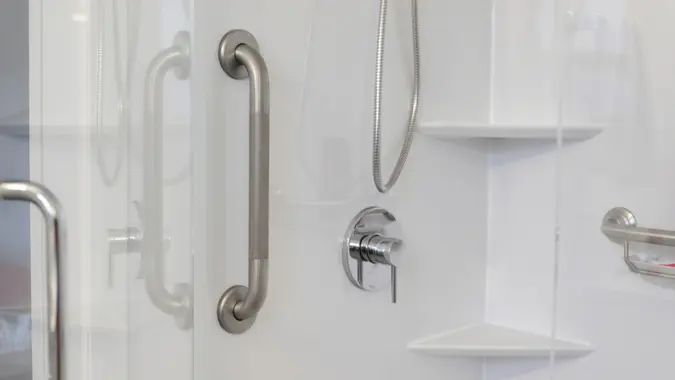The ‘Fill the Gap’ Strategy Could Be the Key To Ensuring You Don’t Run Out of Money in Retirement

Commitment to Our Readers
GOBankingRates' editorial team is committed to bringing you unbiased reviews and information. We use data-driven methodologies to evaluate financial products and services - our reviews and ratings are not influenced by advertisers. You can read more about our editorial guidelines and our products and services review methodology.

20 Years
Helping You Live Richer

Reviewed
by Experts

Trusted by
Millions of Readers
Probably the biggest concern facing retirees is that they will run out of money. After all, there are so many variables affecting a retirement budget that it can be difficult to ensure that you will actually outlive your income.
From your lifestyle to your health and longevity to your investment returns, even the most carefully planned retirement budget is likely to encounter a few hiccups along the way. One solution to this problem that’s gaining popularity is the “fill the gap” strategy, which Forbes called “simple yet powerful.” Here’s how it works.
Also see how much savings you need to retire in every state.
Calculate Your After-Tax Income
You can’t figure out how much money you’ll need in retirement unless you already know how much you have.
Write down all of your predictable and regular sources of income that you anticipate to begin or continue in retirement. Social Security is an obvious one, but you may also have a separate pension or annuity plan. Rental income would also count, as long as you intend to continue being a landlord through your retirement years.
Do not include anticipated income from IRA, 401(k) or other retirement plans. That falls under investment income, which is part of step No. 3 in this process.
List All Your Expenses
Write down an accurate list of all of your real-world expenses. You might discover that once you put these numbers down on paper or a spreadsheet that they add up to more than you imagine. Or you may discover that you’re actually doing a good job of living within your means. Either way, this exercise doesn’t work unless you use actual numbers.
If you’re not yet retired, be sure to tweak your projections in a way that makes sense. These adjustments will vary based on your lifestyle, so they can’t be applied to everyone equally. For some people, retirement means doubling or tripling their travel budget, while for others, it means spending more time at home. As the saying goes, “You do you,” just be sure to adjust your projected retirement budget accordingly.
Calculate the Investment Funds You’ll Need To ‘Fill the Gap’
Here’s where the rubber meets the road. In this step, you’ll subtract your known expenses from your regular income. If that number is positive, congratulations! You’re already set up to enjoy a financially secure retirement. But if that number is negative, don’t fret — it is for the vast majority of people. But what that negative number tells you is that you’ve got a retirement funding gap. To outlive your money, you’ll need to plug it with additional income.
Imagine, for example, that your fixed income is $6,000 per month but you need $7,000 per month to live comfortably. That means you have a shortfall of $12,000 per year in income that you need to cover with investment income. For many retirees, 401(k) and/or IRA withdrawals provide enough income to fill the gap. But if you’re still coming up short, you’ll have to take some steps to ensure that you don’t run out of money in retirement.
How much money do you need to fund an annual deficit of $12,000? That number can be hard to predict, and it will depend on your lifestyle, investment returns and longevity. One rule of thumb is to multiply that figure by 25X, bringing a total needed sum of $300,000 in this example. But that number doesn’t take into account investment returns, just a straight drawdown of $12,000 per year for 25 years. If you invest your money and earn even a very modest 4% annual return, for example, you’ll fund that $12,000 annual shortfall without even having to dig into your principal.
Bear in mind that this simple example doesn’t take into account numerous variables, including inflation, taxation on investment returns and changes in lifestyle. But it’s a good first step to focusing your attention on building and managing the most appropriate nest egg for your retirement.
More From GOBankingRates
 Written by
Written by  Edited by
Edited by 


























